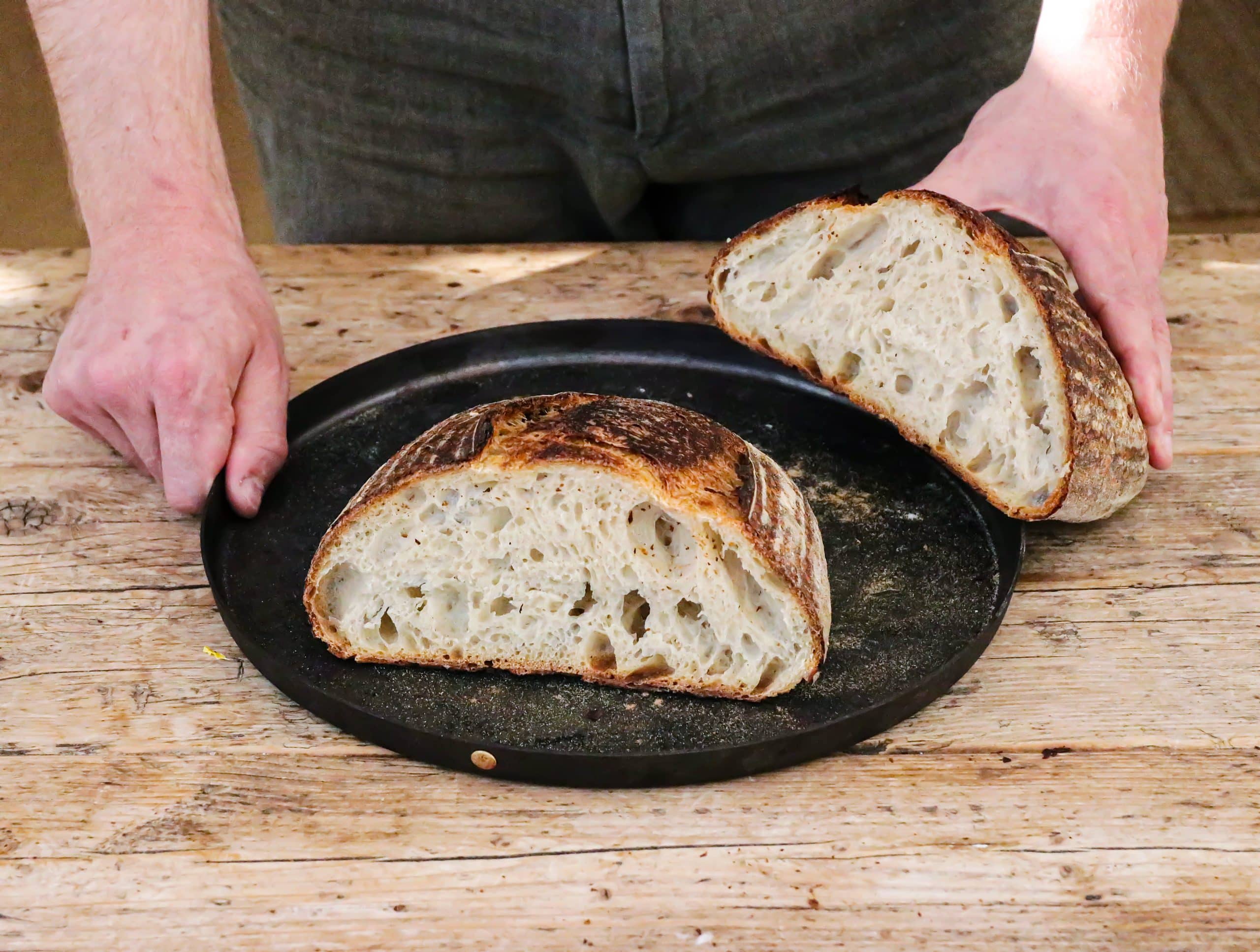In the realm of bread baking, sourdough claims its unique place with its tangy flavor, crisp crust, and soft interior. Harnessing the natural yeasts found in flour, sourdough bread involves a process that is as much art as it is science. It offers a journey that is fascinating and rewarding, culminating in the joy of pulling out a perfectly baked loaf from the oven. Today, let’s take you through this journey by guiding you on baking your own artisanal sourdough bread.
Understanding the Fundamentals of Sourdough
First, let’s understand what makes sourdough unique. At the heart of the process is the sourdough starter. This is a live culture of flour and water that has fermented over time. The starter acts as a natural leavening agent, making the dough rise while also imparting that distinctive sourdough tang.
Avez-vous vu cela : The art of the perfect omelet: tips and techniques
Making your own starter is simple. All you need is flour, water, and time. Start by mixing equal parts of flour and water in a bowl and let it rest, uncovered, in a warm place. Over several days, you’ll need to ‘feed’ your starter with fresh flour and water. You’ll know your starter is ready when it’s bubbly and has a pleasingly sour aroma.
Baking Your First Sourdough Loaf: The Recipe
Now that you have your starter ready, let’s delve into the recipe for your first artisanal sourdough bread.
A lire en complément : The ultimate guide to healthy eating: wholesome meals
The ingredients you will need are as follows:
- 1 cup of active sourdough starter
- 1.5 cups of lukewarm water
- 5 cups of bread flour
- 1 tablespoon of salt
Begin by combining the starter, water, and flour in a large bowl. Mix until all the flour is wet and let it rest, covered, for about 30 minutes. This resting period, called autolyse, allows the flour to absorb the water and begin the gluten development process. After the rest, add salt to the dough and mix thoroughly.
The Process of Stretch and Fold
Once your dough is mixed, the next crucial step is the stretch and fold method. This technique helps in developing a well-structured loaf.
Start by lightly wetting your hand, and gently lift one side of the dough, stretching it upward, before folding it back towards the center. Repeat this process, rotating the bowl after each fold. You’ll notice the dough becoming smoother and more cohesive with each round of stretch and fold.
After stretching and folding, let the dough rest, covered, for about 45 minutes before repeating the process. This should be done for a total of four times, over the course of 2-3 hours.
The Bulk Rise and Shaping
After the final stretch and fold, it’s time for the dough to undergo its first rise, or bulk fermentation. During this time, the dough will double in size, becoming airy and well-structured.
Cover the bowl and leave the dough to rise in a warm place for about 3-5 hours. After the bulk rise, gently deflate the dough and shape it into a round loaf. Place the shaped loaf into a well-floured banneton basket and cover it for the final rise or proofing.
Baking in a Dutch oven
The use of a Dutch oven for baking sourdough is recommended because it mimics a professional oven by trapping steam, thus creating a perfect crust.
Preheat your Dutch oven in a 230°C (450°F) oven while your bread is undergoing its last rise. Once the loaf has risen, carefully transfer it to the preheated Dutch oven.
Bake the bread with the lid on for about 20 minutes to create steam. Then, remove the lid and bake for another 30-40 minutes until the loaf is golden brown and sounds hollow when tapped.
The Importance of Cooling
The final step, although often overlooked, is to let the bread cool completely before slicing. Cutting into hot bread can result in a gummy texture. It’s important to let your loaf rest for at least an hour, preferably two, to allow the crust to develop and the interior to firm up.
Sourdough bread baking is a delightful journey. It requires patience, understanding, and a bit of instinct. However, the reward of a freshly-baked artisanal sourdough loaf is worth every minute. So, get your hands in that dough, and embark on this wonderful journey of baking your own sourdough bread.
The Art of Scoring and Baking Artisan Sourdough
Scoring, a technique used to create a slit on your loaf just before baking, is an important step in baking artisanal sourdough. Scoring helps control the expansion of the loaf as it bakes. It also creates a beautiful pattern on the crust.
To score a loaf, you will need a sharp blade or a bread lame. Hold the bread lame at an angle and make a swift, confident slash across the surface of your loaf. You can experiment with different patterns, but a simple straight or curved line works well for beginners.
After scoring, it’s time to bake. The choice of baking vessel can significantly impact the result of your sourdough bread. A Dutch oven is often recommended for baking sourdough. This is because its thick walls distribute heat evenly, and the tight-fitting lid traps steam inside, creating a moist environment that gives the bread a crispy crust and a soft, airy interior.
Before baking, preheat your Dutch oven inside your home oven to about 230°C (450°F). Line your Dutch oven with a piece of parchment paper for easy removal of the bread after baking. Then, gently transfer your scored loaf into the Dutch oven.
Remember to put the lid on for the first 20 minutes of baking to create steam. After 20 minutes, remove the lid and let the bread continue to bake for another 30-40 minutes. The bread is done when it has a deep golden brown crust and sounds hollow when tapped at the bottom.
Concluding Remarks: The Joy of Baking Artisanal Sourdough Bread
Baking sourdough bread is indeed a labor of love. From nurturing your own sourdough starter to patiently waiting for the dough to rise, all the way to finally pulling out a perfectly baked loaf from the oven, the whole process is an adventure filled with anticipation, joy, and satisfaction.
The process, while time-consuming, is simple and requires only a few ingredients: flour, water, and salt. But the result is far from ordinary. Once you’ve tasted your first slice of homemade artisan sourdough, warm from the oven, you’ll understand why it’s worth every bit of effort and time.
The beauty of baking sourdough bread at home is that you can tweak the process to fit your liking. You can experiment with different types of flour or add-ins like seeds or nuts. The possibilities are endless.
So, why not give it a try? Arm yourself with flour, water, a Dutch oven, and a bit of patience, and embark on this fascinating journey of baking artisanal sourdough bread. With practice, you’ll learn to trust your instincts and develop a feel for the dough, turning baking sourdough bread into a fulfilling and enjoyable ritual.
Remember, the joy of sourdough baking doesn’t just lie in the final product but also in the process itself. It’s about slowing down and enjoying the simple pleasures in life. So, go on, get your hands in the dough, and experience the joy of baking artisan sourdough bread!






